

Chalet Cuckoo Clock with Animated Dancers and Teeter-Totter. Pader (river) Paderborn. Paderborn (German pronunciation: [paːdɐˈbɔʁn] ( History[edit] Paderborn was founded as a bishopric by Charlemagne in 795.
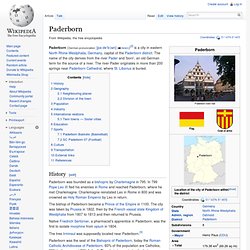
In 799 Pope Leo III fled his enemies in Rome and reached Paderborn, where he met Charlemagne. Charlemagne reinstated Leo in Rome in 800 and was crowned as Holy Roman Emperor by Leo in return. The bishop of Paderborn became a Prince of the Empire in 1100. Native Friedrich Sertürner, a pharmacist's apprentice in Paderborn, was the first to isolate morphine from opium in 1804. The tree Irminsul was supposedly located near Paderborn.[3] Paderborn was the seat of the Bishopric of Paderborn, today the Roman Catholic Archdiocese of Paderborn. 60% of the population are Catholics, 20% Lutherans and 20% "other".
Paderborn in 1647. St. Geography[edit] Paderborn is situated at the spring of the Pader river, approx. 30 kilometres (19 mi) east of Lippstadt and approx. 50 kilometres (31 mi) south of Bielefeld. Bremen. The City Municipality of Bremen (German: Stadtgemeinde Bremen, German pronunciation: [ˈbʁeːmən] ( )) is a Hanseatic city in northwestern Germany.
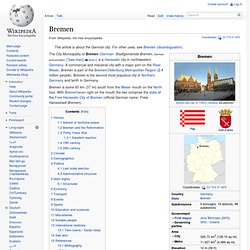
A commercial and industrial city with a major port on the River Weser, Bremen is part of the Bremen/Oldenburg Metropolitan Region (2.4 million people). Bremen is the second most populous city in Northern Germany and tenth in Germany. History[edit] The marshes and moraines near Bremen have been settled since about 12,000 BC. Charlemagne, the King of the Franks, made a new law, the Lex Saxonum. The city's first stone walls were built in 1032. Germania, in the early 2nd century (Harper and Brothers, 1849)
Oberammergau. Culture[edit] Passion Play[edit] The Oberammergau Passion Play was first performed in 1634 and is the result of a vow made by the inhabitants of the village that if God spared them from the effects of the bubonic plague then sweeping the region they would perform a passion play every ten years.
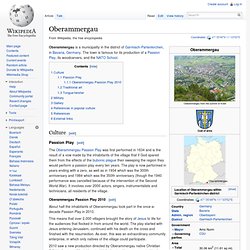
The play is now performed in years ending with a zero, as well as in 1934 which was the 300th anniversary and 1984 which was the 350th anniversary (though the 1940 performance was cancelled because of the intervention of the Second World War). Hohenschwangau Castle. Schloss Hohenschwangau Hohenschwangau Castle at night Hohenschwangau Castle or Schloss Hohenschwangau (lit: High Swan County Palace) is a 19th-century palace in southern Germany.

It was the childhood residence of King Ludwig II of Bavaria and was built by his father, King Maximilian II of Bavaria. Neuschwanstein Castle. Coordinates: Neuschwanstein Castle (German: Schloss Neuschwanstein, pronounced [nɔʏˈʃvaːnʃtaɪn], English: "New Swanstone Castle"[1]) is a nineteenth-century Romanesque Revival palace on a rugged hill above the village of Hohenschwangau near Füssen in southwest Bavaria, Germany.
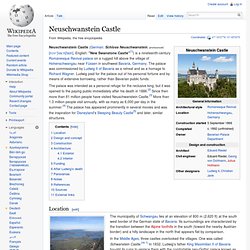
The palace was commissioned by Ludwig II of Bavaria as a retreat and as a homage to Richard Wagner. Ludwig paid for the palace out of his personal fortune and by means of extensive borrowing, rather than Bavarian public funds. Hohenschwangau. Village on left, Schloss Hohenschwangau on right, as viewed from the Neuschwanstein Hohenschwangau is a village in the municipality of Schwangau, Ostallgäu district, Bavaria, Germany.
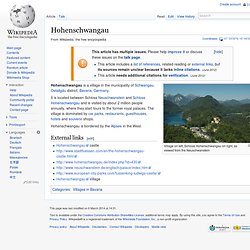
Lindau. History[edit] Lindau in winter The name Lindau was first mentioned by a monk from St.
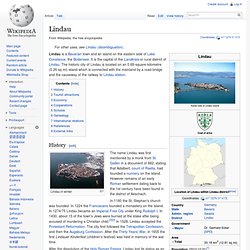
Gallen in a document of 882, stating that Adalbert, count of Raetia, had founded a nunnery on the island. However remains of an early Roman settlement dating back to the 1st century have been found in the district of Aeschach. Rothenburg ob der Tauber. Town Hall of Rothenburg Medieval town wall and Klingentorturm, a defensive tower Southern view of Rothenburg from the castle garden Rothenburg ob der Tauber (German pronunciation: [ˈʁoːtənbʊɐ̯k ɔp deːɐ̯ ˈtaʊbɐ] ( Rothenburg was a Free Imperial City from the late Middle Ages to 1803.
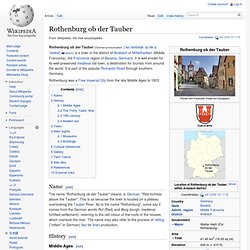
Name[edit] The name "Rothenburg ob der Tauber" means, in German, "Red fortress above the Tauber". Kaiserslautern. Kaiserslautern (German pronunciation: [kaɪ̯zɐsˈlaʊ̯tɐn] ( History[edit] Prehistoric settlement in the area of what is now Kaiserslautern has been traced to at least 800 BC.

Some 2,500-year-old Celtic tombs were uncovered at Miesau, a town about 29 kilometres (18 miles) west of Kaiserslautern. Hotels, Tickets, Beer - everything about the world's biggest fair. Munich. Munich (/ˈmjuːnɪk/; German: München, pronounced [ˈmʏnçən] ( ),[2] Bavarian: Minga) is the capital and largest city of the German state of Bavaria.

It is located on the River Isar north of the Bavarian Alps. Munich is the third largest city in Germany, after Berlin and Hamburg. About 1.5 million [3] people live within the city limits. Its inhabitants are sometimes called Munichers in English. The city's native name, München, is derived from the combined Late Latin and Old High German term ad Munichen, meaning "by the monks(' place)". History[edit] Origin as medieval town[edit] The year 1158 is assumed to be the foundation date, which is the earliest date the city is mentioned in a document. In 1175, Munich was officially granted city status and received fortification. Duke Louis IV was elected German king in 1314 and crowned as Holy Roman Emperor in 1328.